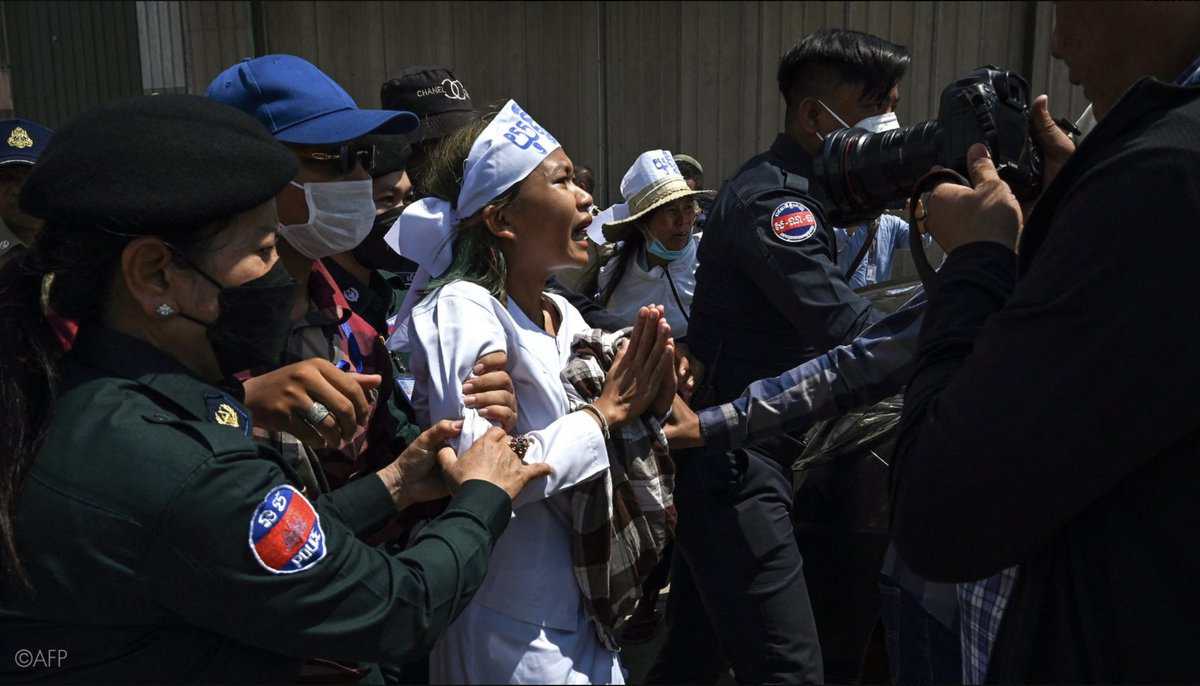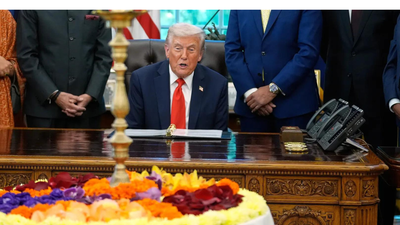Report on Human Rights Violations Against the Hijra Community in Bangladesh and Implications for Sustainable Development Goals
Recent events in Bangladesh involving physical violence and arbitrary arrests of members of the Hijra (third gender) community represent significant challenges to the nation’s commitment to the Sustainable Development Goals (SDGs). Advocacy group JusticeMakers Bangladesh in France (JMBF) has reported on these incidents, which underscore deep-rooted discrimination and institutional failures, particularly in relation to SDG 5 (Gender Equality), SDG 8 (Decent Work and Economic Growth), SDG 10 (Reduced Inequalities), and SDG 16 (Peace, Justice and Strong Institutions).
Incidents of Violence and Arbitrary Arrests
Chattogram Incident (September 10)
In the Gomdondi Phultala area of Chattogram, at least twelve members of the Hijra community were reportedly assaulted. The attack allegedly occurred after the individuals filed a complaint with the police regarding extortion demands they had refused to meet. This incident points to a failure to protect vulnerable citizens and ensure access to justice, directly contravening the principles of SDG 16.
Narayanganj Incident (September 17)
In Narayanganj, police arrested twelve Hijra individuals who were engaged in their traditional and long-standing livelihood of collecting money. JMBF alleges these arrests were punitive actions for refusing to pay extortion money, constituting arbitrary detention and a violation of their right to work, which impedes progress on SDG 8.
Analysis of SDG Alignment and Violations
Obstacles to SDG 16: Peace, Justice and Strong Institutions
- The alleged police extortion and subsequent arbitrary arrests undermine the development of effective, accountable, and transparent institutions (Target 16.6).
- The failure to protect the Hijra community members after they reported a crime demonstrates a lack of equal access to justice for all (Target 16.3).
- The physical violence against this marginalized group is a direct setback to efforts to significantly reduce all forms of violence (Target 16.1).
Setbacks for SDG 10: Reduced Inequalities
- The targeting of the Hijra community highlights systemic discrimination that prevents the social and economic inclusion of marginalized groups (Target 10.2).
- The use of false cases against the victims perpetuates inequalities of outcome and undermines the elimination of discriminatory practices (Target 10.3).
Challenges to SDG 8: Decent Work and Economic Growth
- The disruption of the Hijra community’s traditional livelihood through harassment and arrests denies them the ability to pursue full and productive employment (Target 8.5).
- These actions create an insecure working environment, which is contrary to the goal of protecting labor rights for all workers (Target 8.8).
Contradiction of SDG 5: Gender Equality
- Violence and discrimination based on gender identity are fundamental barriers to achieving gender equality and ending all forms of discrimination (Target 5.1).
- Protecting the rights and dignity of third-gender communities is an integral component of a comprehensive approach to gender equality.
Recommendations for Upholding Human Rights and Advancing SDGs
In response to these events, JMBF has issued a series of demands directed at the Government of Bangladesh. These recommendations align with the state’s responsibility to uphold human rights and achieve the SDGs.
- Conduct an independent and impartial investigation into the incidents of violence and arbitrary arrests to ensure accountability and strengthen justice institutions, in line with SDG 16.
- Ensure the immediate and unconditional release of all arrested Hijras and the withdrawal of all false cases filed against them to restore faith in the rule of law (SDG 16).
- Implement necessary measures to guarantee the safety, livelihood, and security of all Hijra and sexual minority community members, supporting SDG 8 and SDG 10.
- Provide mandatory human rights and sensitivity training to all law enforcement personnel to build more inclusive and just institutions (SDG 16, SDG 5).
- Ensure that all victims receive medical treatment, psychosocial support, and adequate financial compensation to reduce the inequalities they have suffered (SDG 10).
- Enact a “Sexual Minority Protection Act” to provide a legal framework for safeguarding the rights of Hijra and other sexual minority communities, which is crucial for achieving SDG 5, SDG 10, and SDG 16.
Analysis of SDGs, Targets, and Indicators
1. Which SDGs are addressed or connected to the issues highlighted in the article?
The article highlights issues of violence, discrimination, lack of justice, and economic insecurity faced by the Hijra (third gender) community in Bangladesh. These issues directly connect to several Sustainable Development Goals (SDGs) that focus on equality, justice, peace, and economic well-being.
- SDG 5: Gender Equality: The article focuses on the Hijra community, a third-gender group, facing discrimination and violence, which is a core concern of SDG 5’s aim to end all forms of discrimination and violence based on gender.
- SDG 8: Decent Work and Economic Growth: The arrests of Hijra members while they were engaged in their “traditional and long-standing means of livelihood” directly relates to the right to work and economic security, which are central to SDG 8.
- SDG 10: Reduced Inequalities: The persecution of the Hijra community is a clear example of inequality. The article describes “deep-rooted intolerance and discrimination” against a sexual minority, which SDG 10 aims to eliminate by promoting the social and economic inclusion of all.
- SDG 16: Peace, Justice and Strong Institutions: This is a primary SDG addressed in the article. The text details failures of justice and law enforcement institutions, including “arbitrary arrests,” police extortion, “false cases,” and a lack of protection for victims. The calls for impartial investigations, punishment for perpetrators, and legal reform are central to the mission of SDG 16.
2. What specific targets under those SDGs can be identified based on the article’s content?
Based on the specific events and demands described in the article, the following targets can be identified:
- Target 5.2: Eliminate all forms of violence against all women and girls in the public and private spheres…
- Explanation: Although the target specifies “women and girls,” its principle applies to gender-based violence against all, including the Hijra community. The article describes “brutal attacks” and “physical violence” against Hijra members, directly contravening the goal of this target.
- Target 8.8: Protect labour rights and promote safe and secure working environments for all workers…
- Explanation: The article states that Hijra members were arrested while engaged in their livelihood. This action, along with the physical attacks, creates an unsafe and insecure working environment, undermining their right to earn a living without fear, which this target aims to protect.
- Target 10.3: Ensure equal opportunity and reduce inequalities of outcome, including by eliminating discriminatory laws, policies and practices…
- Explanation: The “arbitrary arrests” and “false cases” filed against the Hijra community demonstrate a lack of equal opportunity and protection under the law. The demand to “enact a ‘Sexual Minority Protection Act’” is a direct call to create appropriate legislation to eliminate discriminatory practices, as promoted by this target.
- Target 16.1: Significantly reduce all forms of violence and related death rates everywhere.
- Explanation: The report of “a series of brutal attacks” and the fact that “at least twelve Hijras were injured” in one incident are clear instances of the violence that this target seeks to reduce.
- Target 16.3: Promote the rule of law at the national and international levels and ensure equal access to justice for all.
- Explanation: The article highlights a severe lack of access to justice. The Hijra community was assaulted *after* filing a complaint with the police against extortion. The demands for “impartial investigations,” the “unconditional release of all arrested Hijras,” and the “withdrawal of all false cases” point to a systemic failure to provide equal justice.
- Target 16.6: Develop effective, accountable and transparent institutions at all levels.
- Explanation: The allegations of police extorting money and conducting “arbitrary arrests” indicate a lack of accountability and transparency within law enforcement. The demand for “human rights and sensitivity training to all members of law enforcement agencies” is a measure aimed at making these institutions more effective and accountable.
3. Are there any indicators mentioned or implied in the article that can be used to measure progress towards the identified targets?
The article does not cite official SDG indicators, but it provides qualitative and quantitative information that can serve as implied indicators to measure progress:
- Incidence of violence: The article mentions “a series of brutal attacks” and that “at least twelve Hijras were injured.” The number of reported attacks and injuries against the Hijra community can be used as an indicator to measure progress towards Target 16.1 and 5.2.
- Arbitrary arrests and detentions: The text states that “dozens of Hijras have been detained in arbitrary arrests” and specifically mentions the arrest of “twelve members of the Hijra community” in one incident. The number of such arrests and false cases filed against the community is a direct indicator for measuring access to justice (Target 16.3) and inequality (Target 10.3).
- Existence of protective legislation: The demand to “enact a ‘Sexual Minority Protection Act’” implies its absence. The existence or enactment of such a law would be a clear indicator of progress towards Target 10.3.
- Accountability of law enforcement: The article alleges police extortion. An indicator for Target 16.6 would be the number of investigations conducted into these allegations and the number of law enforcement personnel held accountable.
- Provision of support services for victims: The demand for “medical treatment, psychosocial support, and adequate financial compensation” for victims implies these services are currently lacking. The availability and accessibility of these services can serve as an indicator of state response and protection.
Summary of Findings
| SDGs | Targets | Indicators (as implied in the article) |
|---|---|---|
| SDG 5: Gender Equality | 5.2: Eliminate all forms of violence against all women and girls… | Number of reported “brutal attacks” and “physical violence” incidents against the Hijra community. |
| SDG 8: Decent Work and Economic Growth | 8.8: Protect labour rights and promote safe and secure working environments… | Reports of arrests or attacks on Hijra members while engaged in their “traditional and long-standing means of livelihood.” |
| SDG 10: Reduced Inequalities | 10.3: Ensure equal opportunity and reduce inequalities of outcome, including by eliminating discriminatory laws… | Existence of a “Sexual Minority Protection Act” to ensure legal protection and safeguard rights. |
| SDG 16: Peace, Justice and Strong Institutions | 16.1: Significantly reduce all forms of violence… | Number of Hijras injured in attacks (e.g., “at least twelve Hijras were injured”). |
| 16.3: Promote the rule of law… and ensure equal access to justice for all. | Number of “arbitrary arrests” and “false cases” filed against the Hijra community. | |
| 16.6: Develop effective, accountable and transparent institutions… | Number of investigations into police extortion; implementation of “human rights and sensitivity training” for law enforcement. |
Source: 76crimes.com







